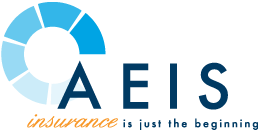Employee Benefits Surveys: Matching Offerings to What Employees Really Need
You Don’t Have to Guess What Employees Want
Many employers offer robust benefits packages but still hear that employees are unaware of what is available or that the benefits do not meet their needs. When that happens, it is not always a matter of the benefits themselves, but how they are communicated, prioritized, or understood.
Business owners, CEOs, and HR leaders are often tasked with designing plans that balance cost with value. But how do you know if your current offerings truly support your team? Without direct input, it is easy to misallocate resources or overlook what matters most to employees.
An employee benefits survey creates a clear, structured way to find out what your employees need, what they understand, and where there may be confusion. With thoughtful employee benefits survey questions, you can uncover what employees are actually using, what they value, and how well they grasp the benefits available to them.
The goal is not to survey for the sake of surveying, but to use the results to guide better decisions for your team and for your bottom line.
You Don’t Have to Guess What Employees Want
A well-designed survey helps eliminate assumptions. It gives you facts about your workforce's preferences, awareness, and satisfaction levels. Most importantly, it tells you what is working and what is not.
By understanding what your employees value, you can:
- Improve utilization of benefits
- Reduce confusion and frustration
- Ensure your investments are supporting recruitment and retention goals
Why Conduct an Employee Benefits Survey?
Every workforce is different. What your competitors are offering may not align with your company culture or employee demographics.
A survey helps you:
- Understand which benefits employees value most
- Discover which offerings are underused or misunderstood
- Identify communication gaps or educational needs
- Make informed, data-backed decisions
It provides a baseline to improve your offerings and engage employees more effectively.
Designing Your Employee Benefits Survey
Start by identifying your objective.
Are you trying to:
- Gauge employee satisfaction with current benefits?
- Prioritize future offerings?
- Improve how benefits are communicated?
Keep the survey short and focused. Aim for completion in 10 to 15 minutes and design it to be anonymous. This encourages participation and honest feedback.
Download the Employee Benefits Survey Template
To make this process easier, we have created a downloadable Employee Benefits Survey Template that includes key question categories and sample formats you can customize to your team.
The printable version is designed to help you gather the insights you need, whether you are assessing awareness, understanding, or preferences. It includes multiple-choice, ranking, scaled, and open-ended questions across topics such as benefit satisfaction, usage barriers, communication preferences, and more.
You can use this survey as-is or tailor it to reflect your company’s goals, industry, or workforce demographics.
How to Conduct the Survey
Once your survey is finalized, you will need to choose how you will distribute it.
Here are a few options to consider:
Digital Surveys: Tools like Google Forms, Microsoft Forms, SurveyMonkey, or Typeform are easy to use and can automatically compile results. They are ideal for remote or hybrid teams.
Printed Surveys: If your employees do not work at desks or have limited access to technology during the workday, a printable form may be more effective. These can be handed out at team meetings or placed in common areas.
Anonymous Submission: Encourage honesty by using a format that protects identity. Online tools typically offer this option, and paper surveys can be returned in a sealed envelope or secure collection box.
Clear Instructions: Provide employees with a brief introduction explaining the purpose of the survey, how long it will take, and the deadline for completion. Reinforce that participation is voluntary but valuable.
Once responses begin to come in, track response rates and send out gentle reminders to increase participation.
Interpreting the Results
- High-priority benefits
- Benefits with low awareness or usage
- Preferences for communication formats
- Common questions or confusion points
If possible, analyze results by employee segment, such as tenure or department, to identify patterns that may not be obvious across the organization as a whole.
Applying the Survey Results
After collecting responses, the next step is to translate the feedback into practical improvements. Here is how you can move from data to action:
Review the Feedback Thoroughly
Look for consistent themes in what employees are saying. Are certain benefits mentioned frequently in the open comments? Is there a common barrier such as lack of awareness or confusion?
Segment the Responses Where Possible
If you are able to collect responses by department, tenure, or location (without compromising anonymity), you may find trends unique to specific groups. This helps you tailor communication or plan design more effectively.
Create an Action Plan Based on the Data
Decide what adjustments make sense in the short and long term. Some changes may be as simple as providing a one-page explainer on a benefit, while others may involve provider changes or plan redesign at renewal.
Communicate Back to Your Team
Employees appreciate knowing that their feedback is heard. Share a summary of what you learned and what actions you plan to take. Even if you cannot act on every suggestion, transparency builds trust.
Integrate Changes Into Ongoing Communication
Use the feedback to shape your benefits messaging year-round. Focus on clarity, repetition, and relevance, especially for underused or
high-impact benefits.
A Simple 3-Step Plan to Improve Engagement
- Download the Employee Benefits Survey
- Collect and review employee feedback
- Work with AEIS to apply the insights and adjust your strategy
With these steps, you are not just gathering information. You are creating a more informed, responsive benefits strategy.
The Cost of Inaction
When benefits are not aligned with employee needs, several issues can arise:
- Missed opportunities to support employee well-being
- Underused or misunderstood offerings
- Wasted budget on benefits that go unnoticed
- Higher turnover and weaker recruitment appeal
By staying in tune with your team, you can proactively address these challenges and strengthen your overall HR strategy.
Partner with AEIS for Strategic Benefits Planning
At AEIS, we work with California-based small to mid-size businesses to help them build employee benefits programs that reflect their workforce and support their goals.
Whether you are developing a survey, reviewing results, or planning for your next renewal, we are here to support you with expertise, strategy, and compliance insight.
Contact us to take the first step in aligning your benefits offerings with what your employees truly value.
Disclaimer: Any information related to compliance, laws and regulations, or other subject matters in this blog is intended to be informational and does not constitute legal advice regarding any specific situation. The content of this blog is based on the most up-to-date information that was available on the date it was published and could be subject to change. Should you require further assistance or legal advice, please consult a licensed attorney.*



